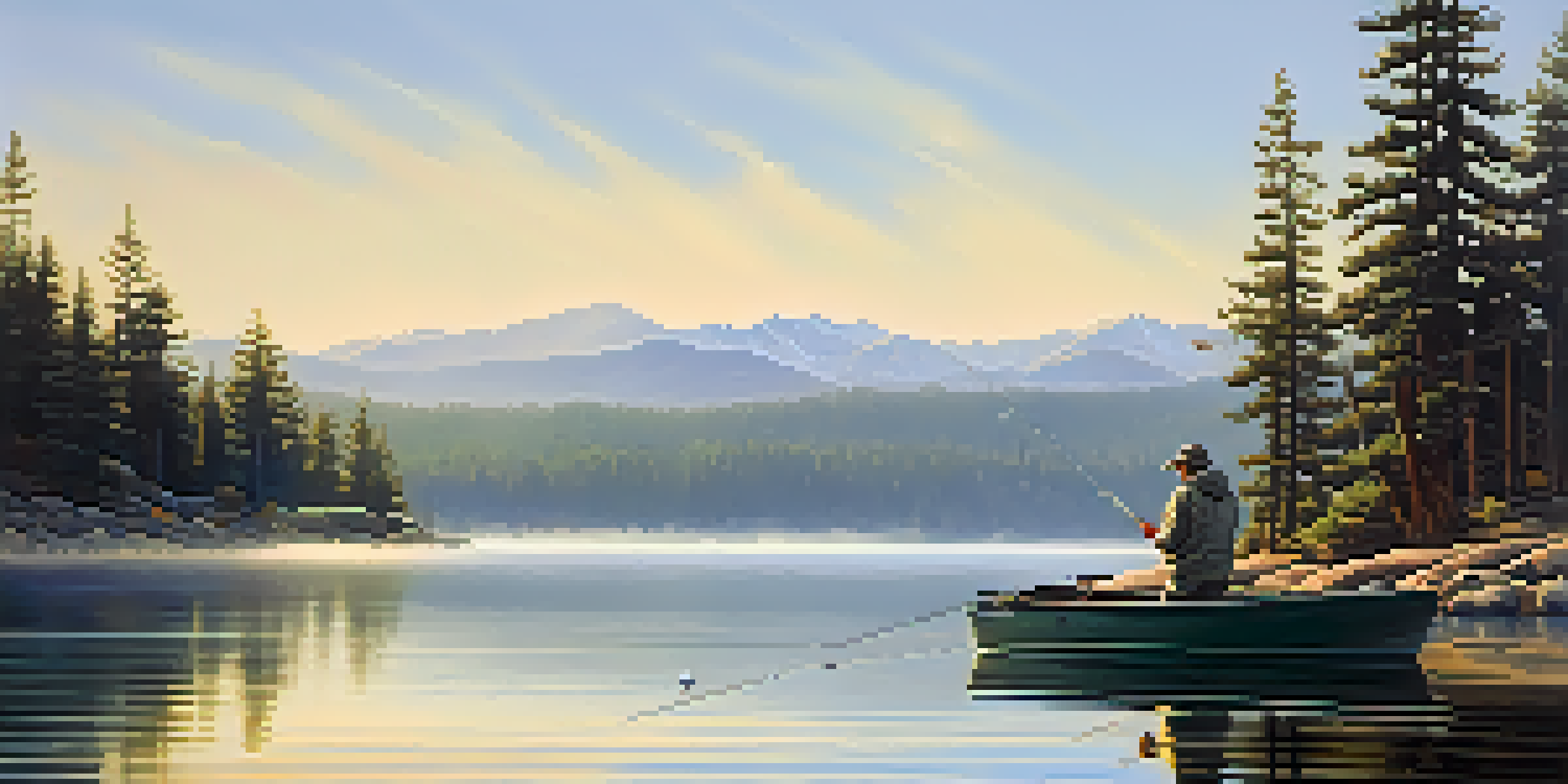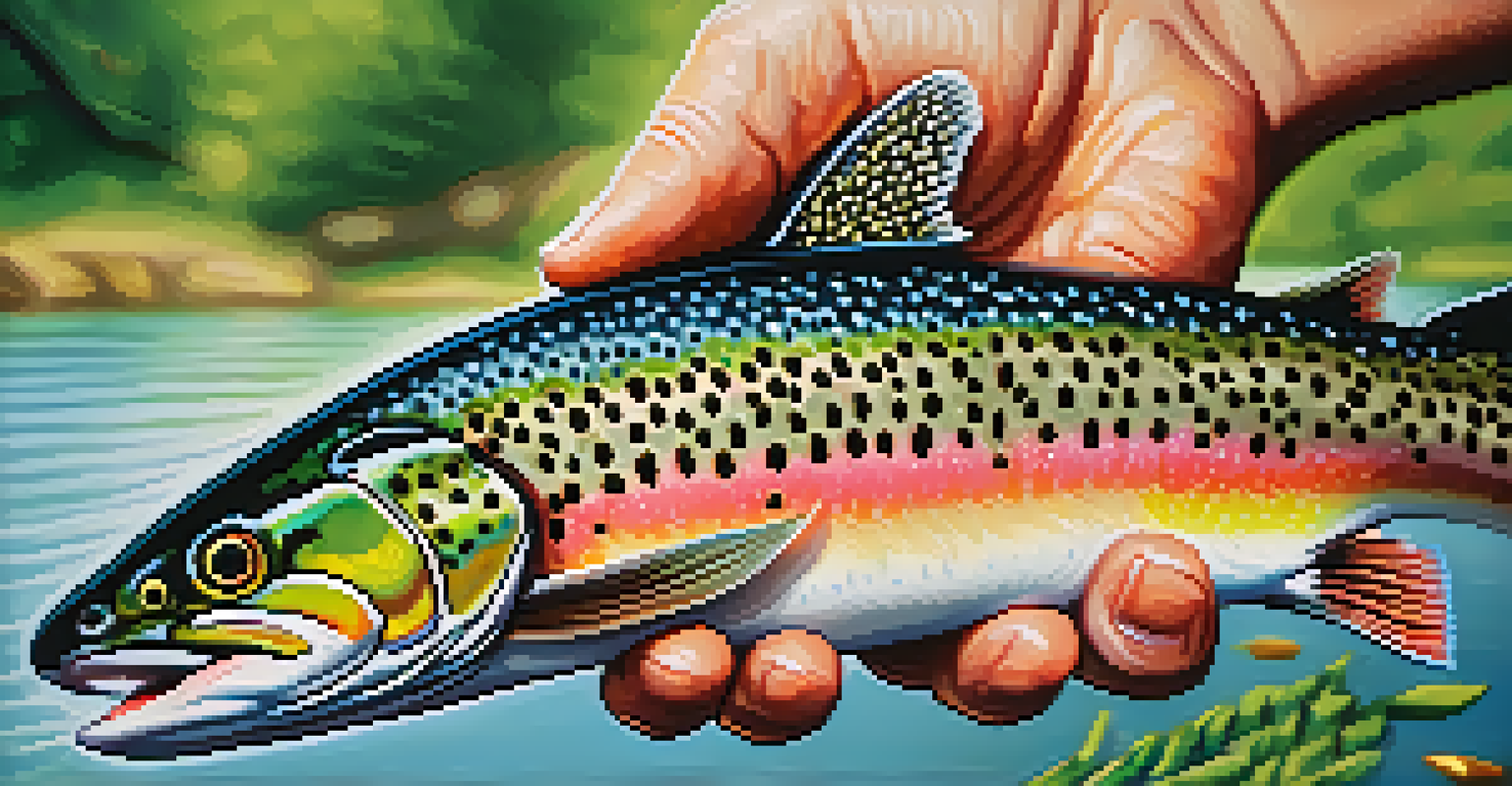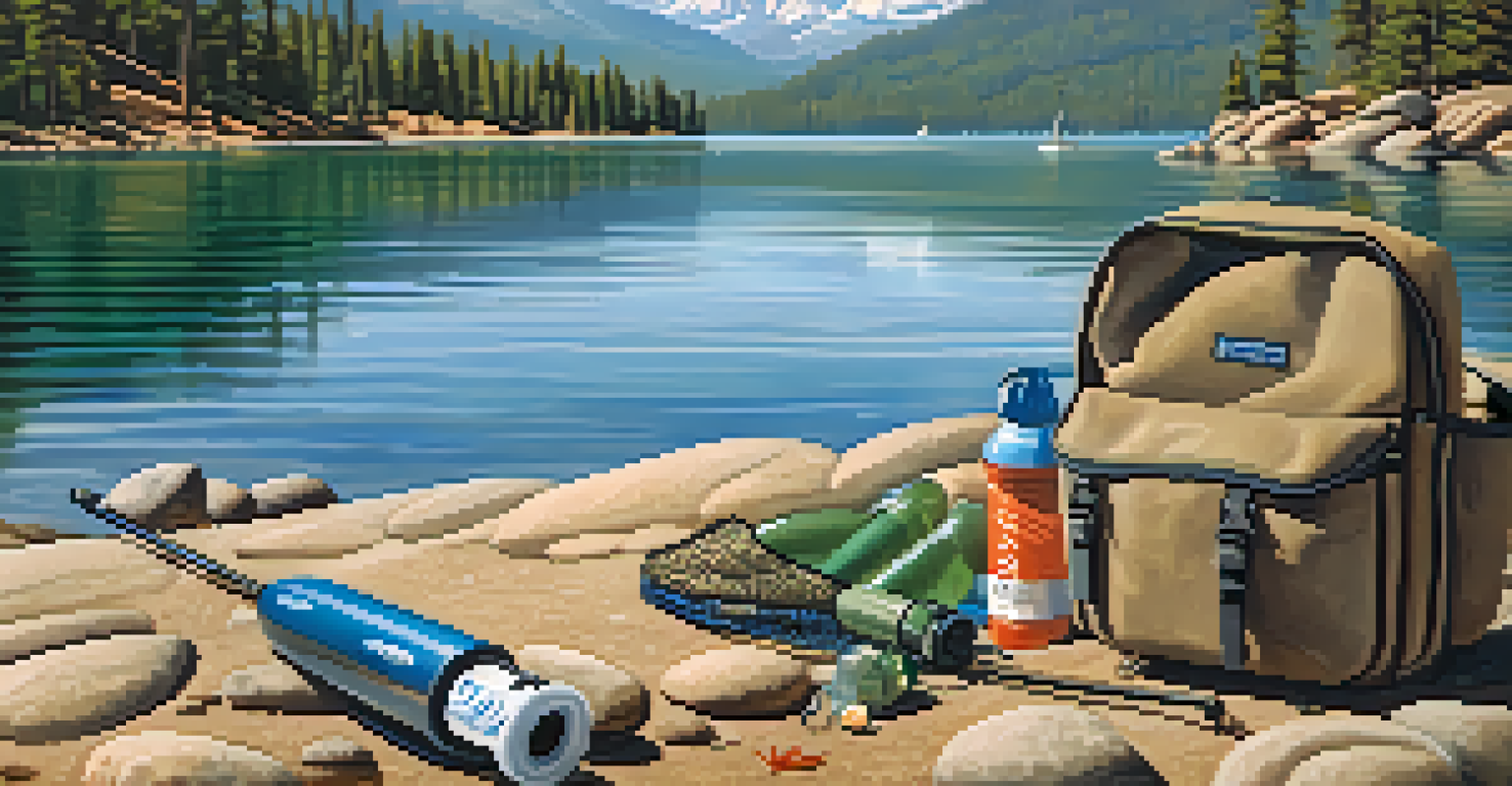Catch and Release: Tips for Fishing in Big Bear Lake

Understanding Catch and Release Fishing
Catch and release fishing is a practice designed to conserve fish populations while allowing anglers to enjoy the sport. Instead of keeping what you catch, you gently release the fish back into the water to swim another day. This method not only benefits the ecosystem but also helps ensure that future generations can also enjoy fishing in beautiful locations like Big Bear Lake.
Fishing is not an escape from life, but often a deeper immersion into it.
When done correctly, catch and release can be incredibly rewarding. It allows you to appreciate the beauty of the fish and the thrill of the catch without impacting local wildlife. Fish that are released properly can continue to grow and reproduce, creating a sustainable fishing experience for everyone.
However, it’s important to follow specific guidelines to ensure the fish's survival after being released. Knowing how to handle fish properly, using the right gear, and understanding local regulations can make all the difference in preserving our aquatic ecosystems.
Choosing the Right Gear for Big Bear Lake
Selecting the right fishing gear is crucial for a successful catch and release experience. In Big Bear Lake, you'll want to opt for lighter tackle, which allows you to enjoy the fight without overly stressing the fish. A medium-light rod paired with a spinning reel is ideal for catching a variety of fish species found in the lake.

Additionally, using barbless hooks can make a significant difference in the fish's recovery time. Barbless hooks are easier to remove and cause less damage to the fish, increasing its chances of survival after release. This small adjustment can help you feel good about your fishing impact.
Practice Catch and Release Fishing
Catch and release fishing conserves fish populations and allows anglers to enjoy the sport responsibly.
Finally, consider using a landing net with a soft mesh. This minimizes the risk of injury to the fish, making it easier to release them back into their habitat quickly and safely. Your gear choice can directly influence the health of the fish population, so choose wisely!
Best Practices for Handling Fish
Handling fish properly is one of the most important aspects of successful catch and release fishing. Always wet your hands before touching the fish to protect their slime coating, which is vital for their health. This simple step helps prevent infections and increases their chances of survival once returned to the water.
The fish is not the only thing that has a right to live and thrive. Every creature has a purpose in the ecosystem, including us.
Minimize the time the fish spends out of the water. It's best to have your camera ready if you plan to take photos, so you can snap a quick picture and get the fish back into its home. The less stress a fish experiences, the better its chances of swimming away healthy.
If possible, use a rubberized net, which is gentler on the fish compared to traditional nets. This helps reduce the risk of injury and keeps the fish calm. Every small effort contributes to a more successful catch and release experience.
Timing Your Fishing for Success
Knowing when to fish can greatly enhance your catch and release success at Big Bear Lake. Early morning and late evening are often the best times, as fish are more actively feeding during these cooler parts of the day. This means you're likely to encounter more fish, making it a win-win situation for you and the fish.
Additionally, weather conditions play a role in fish behavior. Overcast days can encourage fish to venture closer to the surface, while sunny days might push them deeper. Pay attention to the weather and adjust your fishing schedule accordingly.
Choose the Right Fishing Gear
Using appropriate gear like barbless hooks and soft mesh nets enhances fish survival rates after release.
Lastly, consider the seasons. Different species are more active during varying times of the year, so do a little research on what's biting when you plan to visit. Timing is everything, and being in the right place at the right time can lead to a more rewarding fishing experience.
Understanding Local Fish Species
Big Bear Lake is home to several fish species, making it a fantastic destination for anglers. You'll find species such as rainbow trout, brown trout, and even bass, each requiring different techniques for successful catch and release. Understanding their habits and preferred habitats will help you target them more effectively.
For instance, trout are often found in cooler waters, especially in the early morning or late evening. They tend to bite on smaller lures or bait, so adjusting your tackle can lead to more successful catches. Knowing what fish you’re likely to encounter can help you prepare better for your fishing trip.
Moreover, being aware of seasonal changes can impact your fishing experience. Certain species may spawn at different times of the year, which can shift their locations and feeding patterns. Staying informed about local fish behaviors can enhance your catch and release efforts.
Environmental Considerations for Fishing
When fishing in Big Bear Lake, it's essential to be mindful of the environment. Always practice Leave No Trace principles by cleaning up after yourself and minimizing your impact on the surroundings. This means packing out all trash and avoiding disturbing wildlife and their habitats.
Additionally, be aware of local regulations regarding fishing practices and seasons. These rules are in place to protect the ecosystem and ensure sustainable fishing for everyone. Familiarizing yourself with the guidelines will help you enjoy your time while respecting the environment.
Respect Local Regulations
Familiarizing yourself with local fishing rules and environmental considerations helps protect ecosystems at Big Bear Lake.
Lastly, consider using eco-friendly tackle and gear. This not only helps reduce pollution but also promotes a healthier ecosystem for fish and other wildlife. Every little effort counts in preserving the beauty of Big Bear Lake.
Sharing Your Fishing Experience
After a rewarding day of catch and release fishing, sharing your experience can inspire others to appreciate the sport. Whether through social media, blogs, or simply chatting with friends, discussing your adventures can foster a community of responsible anglers. You might even spark someone else's interest in fishing responsibly.
Consider documenting your fishing trips with photos or journal entries. Not only does this create lasting memories, but it can also help you track your progress and techniques over time. Reflecting on your experiences can enhance your skills and deepen your connection to the sport.

Lastly, engage with local fishing communities or clubs. Sharing tips, experiences, and even participating in local clean-up events or conservation efforts can strengthen your bond with fellow anglers. Together, you can promote the values of catch and release fishing while enjoying the beauty of nature.